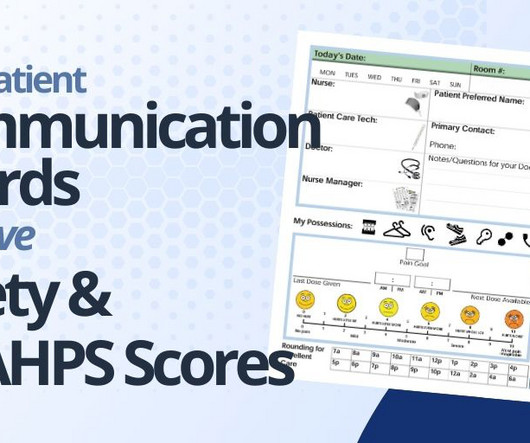How Effective Patient Communication Boards Improve Safety & HCAHPS Scores
Readiness Rounds
JULY 31, 2023
Are you unsure whether they genuinely contribute to patient safety and enhance the overall patient experience? A well-organized and patient-oriented environment, facilitated by the presence of communication boards, positively influences patients' perceptions of the hospital's care quality.












Let's personalize your content